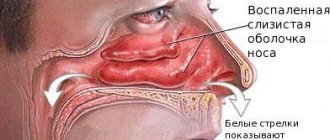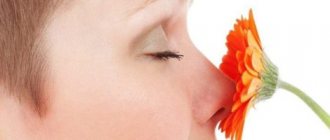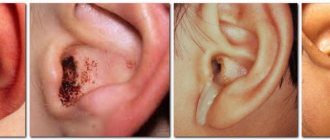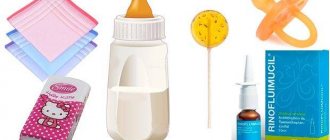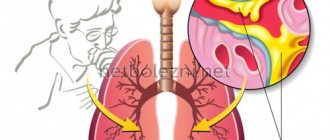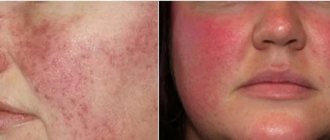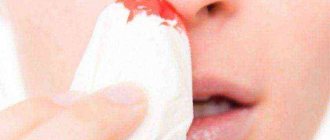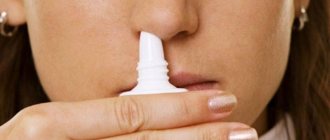When we talk about the redness of the nose, we involuntarily recall a joke from Soviet times: “Don’t be shy, drunkard, about your nose, it’s the same color with the red banner.” As you know, every joke has some truth. Redness of the nose is often a concomitant symptom of chronic alcoholism. The red nose is called wine nose not only because of the color, which resembles red wine, but also because it appears very often among those who like to drink heavily.
However, the nose turns red not only when drinking too much alcohol. It must be said that this is not such a rare occurrence among those who cannot be called drunkards.
Why does the nose turn red?
The nose is equipped with a large number of blood vessels, the expansion of which leads to a change in its color.
Photo 1: Most often, the tendency to redness of the nose is observed in those who suffer from weak, fragile blood vessels. Source: flickr (mattwiddershins).
Temporary redness of the nose
Sometimes the resulting hyperemia goes away quickly after the stimulus is eliminated. Temporary redness is often caused by:
- Anxiety and stress.
- Sudden temperature changes.
- Redness of the nose is often one of the symptoms of rhinitis.
- Allergic reactions.
Constant redness of the nose
- Drinking alcohol significantly weakens blood vessels.
- Another cause of nasal congestion is smoking. And this is also due to the fragility of blood vessels in smokers.
- Rhinophyma is a benign tumor that affects only the nose.
- Demodicosis is a skin disease caused by the demodex mite, which is very difficult to get rid of. Reddish pustules appear on the nose.
- Periarteritis nodosa, which affects the blood vessels of the nose and cheeks.
- Systemic lupus erythematosus is an autoimmune disease that externally manifests itself as a specific butterfly-shaped rash on the skin of the nose and cheeks.
- Seborrheic dermatitis. A fungal disease caused by the active proliferation of a fungus under the influence of stress, hormonal imbalances and decreased immunity.
- Rosacea. For this disease, a red nose is a pronounced syndrome. Subsequently, the reddened area of the nose and cheeks becomes covered with pimples, which are called wine pimples.
- Cuperosis. Red veins and stars on the face, including on the nose, caused by local circulatory disorders when small vessels burst.
- Gastrointestinal diseases.
- Diseases of the heart and blood vessels.
- Disorders of the thyroid gland.
- Gynecological diseases.
If the tip of your nose turns red
Redness of the nose can be more pronounced in different parts of the nose, depending on the cause of the hyperemia.
Note! Redness usually begins from the tip of the nose when affected by dermodicosis. The mite spreads from this area, gradually affecting the surrounding skin and moving to the entire nose, as well as the cheeks and forehead.
Redness of the tip of the nose usually indicates irritation of the gastric mucosa.
Red nose in men
Both men and women suffer from a red nose. Perhaps only rhinophyma of the nose, the so-called pineal nose, still affects men more often than the weaker sex. In other cases, it is hardly possible to classify the causes of this unpleasant defect based on gender.
But since the fair half of humanity takes better care of themselves and reacts more quickly to the slightest defects, a generally accepted opinion is created that there are much more men with red noses than women.
This is due to the fact that men tend to have a more indifferent attitude towards their appearance, as a result of which they are more likely than women to not mask the defect, not pay attention to the disease, and start its course, and therefore the manifestations of nasal hyperemia in men always look more pronounced.
Red nose in women
Redness of the nose in women is often caused by external factors. Their skin reacts more strongly to the influence of temperatures: cold and heat. You are more likely to get allergic reactions from using incorrectly selected skin care and cosmetic products.
If we talk about internal factors, then in the fairer sex, redness of the nose is often caused by stress and anxiety, hormonal imbalances and gynecological problems.
This is interesting! Women are more likely than men to suffer from rosacea.
Why does the nose turn red?
The nose is usually the most weather-exposed part of the face.
In cold weather, people cover their foreheads with a hat, protect their chin and lips with a collar or scarf, but their nose and cheeks are mercilessly exposed to the wind and cold. Unprotected areas of the skin turn red due to vasodilation - the body launches protective mechanisms designed to warm the parts exposed to cold. Redness is especially noticeable during sudden changes in temperature or during prolonged exposure to frost. Some people are more susceptible to skin redness in the cold than others - as a rule, these are those who suffer from vegetative-vascular disorders, or those who have very thin and delicate skin. With vegetative-vascular dystonia, people tolerate low temperatures worse, and blood circulation is disrupted, including in the capillaries. Under thin, light skin, dilated blood vessels are more noticeable, so the skin quickly turns red.
How to Simply Recommend
Why the medicine does not work The key to successful treatment is, of course, following all the doctor’s recommendations and informing him of all significant changes during therapy. However, a specialist can talk as much as he wants about the regimen and duration of taking the drug, but most patients will still violate these rules. Read more
Another reason for skin redness at low temperatures is the so-called “cold allergy”. This is a specific reaction of the body to low temperatures, which is not related to a true allergy, but manifests itself very similarly - areas of the skin exposed to cold become covered with red spots or an itchy rash, peel, and swelling of the fingers and toes is possible. At the same time, not only the nose turns red - spots appear on all open areas of the body.
“Cold allergy” is often accompanied by rhinitis, headache, and difficulty breathing.
What to do when your nose is constantly red
Temporary redness of the nose usually does not cause alarm; it is easy to get rid of it by eliminating the causes that provoke hyperemia. However, the mere fact that the nose often turns red should alert you and make you reconsider your lifestyle and diet. Think about measures that can help strengthen blood vessels.
Photo 2: If there is persistent redness of the nose, a doctor should identify the causes. Homeopathy offers gentle, albeit longer, but absolutely safe therapy for the treatment of red nose.
Recently, many people have complained that their nose turns red after eating or as a result of prolonged exposure to the open sun. This pathology is considered the first sign of the formation of an infectious or viral disease. For this reason, this pathology cannot be ignored. Although many people think that the causes of such inflammation lie in a cosmetic defect.
A red or blue nose is a common inflammation that needs to be treated. Many reasons actually consist only of external factors, but upon closer examination of the cause of a blue nose, serious ailments can be identified. Pay special attention to reading this material if you notice that the tip of your nose is periodically red or blue.
The nose is responsible for many functions in the body
, but its main task is to perform function and breathing.
Therefore, any ailments in this area can lead to serious disruptions in the body, which greatly deteriorate the quality of life. For this reason, it is necessary to treat any viral or infectious diseases at the very beginning. If negative processes are ignored, acute illnesses may develop.
Redness of the nose can occur due to a variety of everyday reactions that do not require medication or surgical intervention.
Often the cause of redness of the tip of the nose lies in prolonged exposure to wind or cold.
In this case, such a reaction to hypothermia becomes only a temporary factor in the color change. But in some cases, frostbite becomes the root cause of rhinitis.
Often temporary reactions in the form of changes in the color of the skin of the nose are caused by the anatomical features of the patient. With strong blood circulation or changes in blood pressure, it is possible that the skin color may change not only on the nose, but also on the face as a whole. With frequent increases in blood pressure, development is possible.
Rhinophyma
Chronic inflammation of the skin of the nose is called rhinophyma.
. With this disease, only limited color change occurs. This is due to hypertrophy of connective tissues, as well as inflammation of the sebaceous glands and vascular system.
Treatment in this case is strictly individual.
Allergy
An allergic reaction may cause a red face or nose
.
Most often, such inflammation occurs as a result of an allergic runny nose or as a result of hyperemia.
Another common cause of an allergic reaction and discoloration of the skin is swelling of the skin.
One of the provoking factors for a red nose is frequent nose blowing or using a handkerchief. Another reason for color changes is the body’s increased sensitivity to the effects of negative factors that provoke allergies.
Seborrheic dermatitis
Seborrheic dermatitis is considered a common pathology.
.
This inflammation is characterized by a disorder of sebaceous secretions, which cause increased activity of these glands.
Increased secretion provokes a change in the chemical composition of the skin.
It is known that the nasal area has the most sebaceous glands. With their active work, seborrheic dermatitis is formed.
Inflammation has a negative effect on hypersecretion of the skin
, which causes a serious change in the flora. Often this disease manifests itself as hyperemia. In addition, various oil-colored spots immediately appear on the skin, which have clear boundaries. As a result, the nose gets a red tint in the place where the most sebaceous glands have accumulated.
Demodicosis
Not always a large accumulation of sebaceous glands in one place can provoke a change in color. In addition to seborrheic dermatitis, demodicosis often forms in place of a red or blue nose .
The causes of redness of the tip of the nose may be demodicosis.
With this type of disease, inflammation occurs in the nasal area, which is quite difficult to cure. Please note that such a lesion has certain boundaries - the formation can be from one to two millimeters.
At the very first stage of inflammation, single red or pink inflammations
. Over time, the disease invades healthy skin, which, if left untreated, can reach the entire surface of the face.
Periarteritis nodosa
Another cause of discoloration of the skin of the nose is periarteritis nodosa.
. With such inflammation, progressive inflammation and damage to arterial vessels occurs with the formation of microaneurysms.
Most often, periarteritis nodosa affects patients who were previously diagnosed with vascular problems.
This disease is localized in an area of strong blood circulation. Therefore, the skin of the face suffers first.
At the first symptoms of the disease, minor rashes form on the cheeks or nose.
Subsequently, periarteritis nodosa affects the entire surface of the face.
In rare cases, periarteritis nodosa manifests itself in the form of bullae. With this disease, patients complain of severe changes in skin color. Most often, bullae occur during prolonged exposure to wind or cold.
Infectious inflammations
A change in color towards red or blue can symbolize acute respiratory inflammation.
Most often, a red nose indicates irritation of the mucous membrane and nerve endings of the nose.
Another reason could be frequent stimulation or palpation of the nose.
With such irritation of the skin, the formation of various wounds and cracks is possible, which provoke discoloration.
When the body is affected by viruses or infections, patients suffer from colds, flu or acute illness. With this disease, the red color is formed at the very initial stage of the disease. By paying attention to this factor, you can begin treatment as quickly as possible. In this case, healing will occur much faster.
Systemic lupus erythematosus
lupus erythematosus
– this is a severe and very serious disease, which is characterized by disruption of the patient’s entire immune system.
With such inflammation, the body's own cells are perceived as foreign. Lupus erythematosus provokes a change in skin color.
In addition to the change in color, the patient develops a high body temperature, severe weight loss, general weakness, and fatigue. Patients quickly get tired, their sleep is disturbed, their appetite is lost, their sense of smell is impaired, nausea, vomiting, and dysfunction of the vestibular apparatus appear. In more rare cases, visual impairment may occur.
Carcinoid syndrome
Carcinoid syndrome is a reaction to the appearance of a malignant tumor.
If you have symptoms such as redness of the skin, pain in the abdomen, intestinal upset, pain in the heart, it is necessary to check for the presence of this syndrome.
After this, a diagnosis of cancer and its location is carried out.
The appearance of carcinoid syndrome depends on hormonal levels. When they change, the patient may notice a change in the color of the tip of the nose, as well as the face and neck area.
What diseases is a red nose a symptom of?
- A red nose is the most likely symptom of rhinophyma.
Rhinophyma (wine nose, pineal nose) is the most likely cause of limited redness of the skin of the nose. The disease is characterized by inflammation of the skin of the nose, followed by hypertrophy of connective tissue, sebaceous glands and blood vessels. Externally, the red nose looks slightly swollen.
Rhinophyma (wine nose, pineal nose)
There are the following types of disease:
- Fibrous-angiomatous;
- Glandular;
- Fibrous;
- Actinic.
The most common causes of rhinophyma:
- Alcoholism;
- Unfavorable environmental conditions;
- Endocrine diseases;
- Chemotherapy;
- Autoimmune diseases.
A common manifestation of allergies is allergic rhinitis. As a result of local sensitization by allergens, hyperemia and swelling of the nasal skin occurs.
Spots on the nose due to allergic reactions
A contributing factor is the frequent use of a scarf. Also, the cause of a red nose is constant sensitization of the mucous membrane by allergens.
The area of the nose contains a large number of sebaceous glands, so this place is the most favorable for the development of seborrheic dermatitis. This disease is characterized by hypersecretion of sebum and changes in skin microflora.
Seborrheic dermatitis manifests itself as hyperemia
Oily seborrhea is manifested by hyperemia and the appearance of small reddish papules with an oily sheen and clearly defined edges. The olfactory organ becomes red in the areas where the largest number of sebaceous glands are located. First of all, the areas of the wings of the nose acquire a red color.
- The cause of limited hyperemia is demodicosis
Demodicosis is characterized by inflammatory processes of the facial skin, which are not easy to get rid of. The main manifestation is the formation of pustules ranging in size from 0.5 to 2 mm. First, single red formations appear on the skin, which then appear over the entire surface of the face.
A red nose also appears due to demodicosis.
There is a false belief that Demodex mites only infect the eyelids. The eyelids are affected mainly in the erythematous form of the disease and indicate the neglect of the process. It is important to correctly make a differential diagnosis with other diseases that are characterized by the symptoms of a red nose, since this is important for the correct diagnosis and effective treatment. The red color appears not only as a result of the inflammatory process, since another reason is the pathogenic effect of the demodex mite.
In 40-45% of people with periarteritis nodosa, vascular papulopetechial purpura is observed, which is localized in areas of abundant blood supply.
Initially, pinpoint rashes appear on the nose and cheeks, which subsequently affect the entire surface of the skin.
This is what periarteritis nodosa looks like
Sometimes the rashes look like bullae or vesicles. Patients complain that the nose becomes redder than usual in the morning and after contact with cold air. But after some time, patients cannot identify the reason for the appearance of red color.
Redness of the nasal area is one of the symptoms of colds. Firstly, a red nose due to the fact that nerve receptors are irritated by the resulting mediators, and secondly, due to the constant irritation of the formed micro-wounds of the skin by mucous secretions from the nasal cavity.
An acute respiratory illness, more commonly referred to as a cold
The nose becomes red in the middle of the day. People often use vasoconstrictor drops to reduce the severity of symptoms. Thus, they manage to get rid of the red nose for a short time, but in this way, the ciliated epithelium of the mucous membrane is damaged.
- Systemic lupus erythematosus is an autoimmune cause of nasal erythema
The most well-known symptom of lupus is a butterfly-shaped redness of the skin of the nose and cheeks.
Systemic lupus erythematosus - often appears in the form of a butterfly
But this disease is also characterized by skin hyperemia in the décolleté area and the appearance of limited areas of skin hyperemia in the form of a ring, which is located inside a larger ring. The autoimmune cause contributes to joint damage and is accompanied by increased body temperature, weight loss, and general weakness.
- Carcinoid syndrome is the cause of hyperemia
Carcinoid syndrome has many clinical manifestations, which depend primarily on the spectrum of hormones secreted. Hyperemia is one of the most common symptoms. The skin of the face and neck is mainly hyperemic. Cases have been described in which a symptom of carcinoid syndrome was limited hyperemia of the nose and paranasal skin. Attacks of sudden hyperemia may have no objective reason, or may be provoked by emotional experiences, physical exertion, or drinking alcohol.
- Rosacea as a cause of a red nose
The main symptoms of rosacea are redness of the nose and cheeks, which later become intensely covered with acne. This unpleasant cosmetic defect was previously called “wine acne”, “the curse of the Celts”.
Rosacea - rosacea
Not all cases of rosacea are caused by alcoholism. The disease occurred after thirty years in people with a pale complexion and blue eyes. Further, the skin became rough with uneven defects and acne suppuration. The diagnosis of rosacea is not difficult to make, because the disease has no other symptoms, patients do not complain. Such people have only one expressive defect - a red nose.
Standard treatment
First of all, it is necessary to carry out a diagnosis.
If you notice a serious change in skin color, consult your doctor. When examined by an experienced specialist, it is necessary to conduct several types of studies and identify the cause of inflammation.
At the next stage, treatment of the disease is prescribed. Why the nose is blue or red can only be determined by a doctor.
If your nose is blue, what should you do first?
Treatment for the symptom of skin discoloration should be directed to the underlying cause.
Most often, a red or blue nose indicates systemic damage to the body.
, which requires careful medical supervision. Therefore, independent treatment in this case is excluded.
Patients often try to get rid of inflammation using folk remedies or using ointments or creams. Such treatment without a doctor's prescription can only worsen the situation. In addition, by reducing the symptoms of inflammation, you will not destroy the cause of the disease.
Treatment most often involves surgery
. This method is necessary for rhinophyma or cancer.
In case of allergic reactions, more conservative treatment
, with the use of vasoconstrictor drugs and other methods of therapy.
In addition, it is necessary to ensure disposal of the causative agent of inflammation.
With carcinoid syndrome, the patient requires a tumor diagnosis.
In the future, the patient will be prescribed surgery and a long course of rehabilitation.
If seborrheic dermatitis is diagnosed, it is necessary to maintain good hygiene and a course of treatment based on anti-inflammatory drugs.
If the disease is complex, the patient is prescribed antibacterial therapy.
Red nose: main causes
There are many reasons why the nose turns red. In most cases, frost or heat is to blame. As a result, the skin exhibits a normal reaction to the weather.
Redness in the nose area can also occur with high nervous tension.
Although usually the person's cheeks turn pink in this situation, in some cases the redness can spread throughout the entire face. This problem can be solved through auto-training (self-soothing). When the attitude towards an exciting situation changes, the blood no longer rushes to the face so intensely, as a result of which the nose does not change its color.
Another reason is smoking. The blood vessels of smokers become particularly sensitive, due to which even a short stay in a cold or stuffy room can provoke a spasm. The result is a red nose. A similar problem occurs in people suffering from thyroid diseases.
Among other things, the nose of a person with an unhealthy addiction to alcohol also turns red. Frequent use is fraught with increased blood pressure and dilation of blood vessels. As a result, impaired blood circulation, arteriole swelling, microaneurysm, and microstroke are observed. All these negative consequences of alcoholism cause redness on the face, especially in the nose area.
A red nose is a symptom of a disease called rosacea. It is a chronic skin disease characterized by burgundy skin discoloration, nodule formation, and blood vessel problems. It starts with a slight redness of the tip of the nose and ends with a total purpleness of the middle of the face and deformation of the nose. Rosacea affects people over 30 years of age.
The cause of this disease may be genetic predisposition, abuse of spicy food and alcohol, or gastrointestinal discomfort.
The most dangerous case is considered to be when a red nose is a symptom of a special disease caused by ticks. At the first stage, the redness affects only the tip of the nose. Then it spreads across the entire middle of the face, and then, if left untreated, the cheeks and forehead turn red. In a short period of time, a dense network of winding veins, engorged with blood, appears on the nose.
From this, it begins to increase in size and become thicker.
The sebaceous glands grow, causing an oily sheen to appear. As a result, the nose begins to resemble a purple pear.
Redness in the nose area can be caused by a variety of factors, ranging from weather to a serious infection. Like any disease, a “red nose” requires immediate treatment. It is possible to accurately determine the origin of this symptom only at an appointment with a dermatologist. Taking into account the patient’s complaints and test results, he will identify the root of the problem and prescribe the appropriate course of treatment.
Return to contents
Advice website
Winter means New Year, snow, skis and sleds, and, of course, frost. The frost that stings your cheeks and nose makes you move faster and hide your face in a scarf or collar. In the cold, many people's faces turn red, primarily their nose. And this cannot but upset you, well, unless, of course, you are Santa Claus, who has a red nose “according to the state.”
A red nose in the cold can be a consequence of vegetative-vascular diseases, when our blood vessels either expand very strongly or, conversely, contract.
With a sharp change in temperature, the vessels located at the tip and wings of the nose can expand. As a result, the nose becomes bright red.
The nose turns red in the cold and in people suffering from heart disease, hypertension, and chronic runny nose. In any of these cases, it is the cause, not the effect, that needs to be treated.
People suffering from vegetative-vascular dystonia should be extremely careful about their lifestyle:
avoid stress,
give up spicy, fatty foods,
reduce the consumption of tea and coffee, and especially alcohol,
Do not under any circumstances do paraffin masks, facial massages, etc.,
To strengthen blood vessels you need to take vitamins C and E.
Redness of the nose can be caused simply by the fact that you have very thin and light skin through which the blood vessels are visible.
In this case, no treatment is required. Women can use special correctors that mask the red veins of blood vessels.
If your nose turns red, you can use folk remedies to solve this problem. Chamomile compresses are very effective.
Saturate a clean napkin with chamomile infusion (pour 2 tablespoons of chamomile flowers with a glass of boiling water, let it brew) and apply it to the nose. You can alternate hot and cold compresses.
Linden decoction also helps well with dilated blood vessels. Prepare a decoction by pouring a glass of boiling water over 1 teaspoon of linden flowers.
Wipe your nose twice a day, morning and evening.
However, a reddened nose may also indicate the onset of frostbite.
However, if the nose is red, it means it is not frostbitten yet, but if it turns white and loses sensitivity, take action immediately.
If your nose is frozen, you don’t need to rub it with snow or a mitten, you need to warm it up urgently. Covering your nose with a warm palm, immediately run indoors.
If your nose has “warmed up” and become sensitive, lubricate it with any rich cream. If sensitivity does not return, consult a doctor immediately.
More on the topic:
| How to spend time with your family | Festive fish dishes |
| Therapeutic exercises for the back | Probability of having twins |
| Ice cream cocktail | How to make crackers |
Red nose: ways to prevent and treat the disease
First of all, you need to examine the general condition of your body. A red nose can be a symptom of a cold, stress, indigestion, or anemia. If you cure the underlying ailment, the redness will go away on its own.
If the problem is caused by enlarged pores, then the best solution would be to review your diet. Overeating, consumption of spicy foods, alcohol, strong coffee or tea stimulate blood flow and local vascular dysfunction.
In the case when the weather is to blame for the redness of the nose, there is a need to harden it. To do this, you can make compresses from chamomile or sage infusion several times a week. Compresses should be alternated so that the last one is cold: this will help narrow the pores and improve the functioning of blood vessels. Among other things, it is necessary to protect the nose from extreme cold and active sunlight. Special face creams will be good helpers in this matter. Rubbing in the morning and before bed with a decoction of linden blossom also helps prevent the skin from turning red from frost.
There is a well-known method of hardening gymnastics for the nose. Standing by an open window, you need to take a series of short nasal inhalations and exhalations.
You need to wash your face with water at room temperature. After washing, it is useful to perform a light massage of the nose, gently pinching and pressing on it with your fingertips.
Steaming (steam baths and paraffin masks) is not recommended for this problem.
If the doctor has not identified serious reasons why the nose turns red, then you can treat and relieve the unpleasant symptom with folk remedies:
- Cabbage juice mask. Soak a gauze pad in cabbage juice and place it on your nose. Keep for 15 minutes. When the napkin dries, moisten it again and repeat the procedure. Apply the mask every other day.
- Aloe juice mask. This mask is recommended for the appearance of rosacea. You need to dilute aloe juice with water, moisten a napkin in it and leave it on your face for 15 minutes. Repeat once every 2 days. The course of treatment includes 20 procedures.
- Rosehip mask. Prepare rosehip infusion (1:20), moisten a napkin in it and apply to the nose for 15 minutes. Repeat every other day.
- Cranberry mask. Place a napkin soaked in cranberry juice on your nose and keep it there for an hour, re-wetting it every 15 minutes. After washing off the mask, it is recommended to powder your face a little.
With the onset of cold weather, the nose begins to turn red. Especially in men and children. However, redness also occurs in women with thin skin. Capillaries begin to appear and burst, and, unlike the blush on the cheeks, a red nose does not have the same aesthetic effect. However, low temperatures may not be the only reason.
We are looking for the cause and treatment if the nose is red
Of course, winter and frosty air can be a reason, but not if redness appears constantly. If this turns into a problem, then the redness may be based on a number of diseases or general low immunity of the body. A pink nose is just a signal that there are ailments that need to be treated without fail.
So, here are a number of possible reasons, besides the low temperature outside, why the nose is always red:
- stomach or digestive problems;
- excessive excitement, but in this case the cheeks also acquire a pink tint;
- problems with the functioning of the thyroid gland - enlarged, decreased, iodine deficiency;
- excessive smoking;
- rosacea usually occurs in children;
- rosacea - in this case the whole face is subjected to a pink tint;
- alcoholism;
- rosacea;
- demodicosis
A common problem why the nose may be red is rosacea. For a long time, this disease was identified incorrectly, and only by the beginning of the last century did doctors come to the conclusion that alcohol is not always the root cause. And just recently we figured out the disease itself and found ways to treat it.
However, the source of rosacea is still not known. Today it is only clear that it can be hereditary; the fair half of humanity with light skin pigmentation and charming blue eyes is more susceptible to it. In this case, the disease manifests itself after thirty.
Its symptoms manifest themselves as follows: whether you drank something hot, over-peppered the meat, or were slightly agitated, your blood vessels instantly take on a crimson tint. And as they say, the further into the forest, the more firewood - over time it remains on the face longer and longer. This stage can only be determined by a dermatologist.
In the future, the disease is accompanied not only by crimson temporary spots, but also by the appearance of pink acne; dilated blood vessels and blue veins become visible on the skin. And if before that the potential patient was not bothered by the skin, now a trip to the dermatologist cannot be avoided, since the amount of foundation on the face is increasing and increasing.
At the next, most advanced stage, the affected skin begins to harden, the pores become wider, and the acne may become purulent. However, it usually does not go to such extremes if you consult a doctor on time. If frequent redness of the nose is the only thing the patient complains about, then the diagnosis is quite simple. Doctors identified the trigeminal nerve as the source of this disease, but why exactly it works incorrectly is not entirely clear.
This may be a consequence of such factors:
- excessive consumption of caffeine-rich foods: green tea, Coca-Cola and coffee;
- the presence in the diet of spicy foods with a lot of spices and herbs;
- regular exposure to direct ultraviolet rays - rather a solarium than just tanning in the sun;
- excessive nervousness and stressful situations;
- not alcoholism, but still drinking large amounts of alcohol;
- use of birth control pills.
Some other reasons contribute to the appearance of rosacea:
- weakened immunity after a serious illness, including nervous conditions;
- stress and stress on the nervous system - frequent breakdowns, hysterics, depression;
- diseases of the circulatory system;
- problems in the endocrine and digestive systems.
But the presence of these ailments does not necessarily mean the development of rosacea. In any case, redness may not mean anything, but a stable and long-lasting pink tint on the face is a signal that the path lies to a dermatologist.
Red nose in any season: what to do
It often happens that a pinkish tint is nothing more than a cosmetic error, and it should not be treated with medication. This problem often occurs in children. In this case, you should contact not only a dermatologist to make it 100% clear that this is not a disease, but also a cosmetologist. He will prescribe a series of treatments to get rid of the redness on your face.
However, in cases such as rosacea, medical intervention is simply necessary. At the same time, the red nose is also covered with embossed skin. The disease then spreads to the forehead and cheeks, and vessels and capillaries begin to protrude.
Often this disease can appear in childhood. Of course, he does not belong to the risk group, however, why deliberately spoil the appearance of your beloved child? Couperosis can be eradicated, the main thing is to start it in a timely manner, especially since the treatment of the disease does not proceed so quickly.
There are several stages in treatment:
- First of all, a course is conducted to strengthen the vascular system. The walls weaken, expand and begin to protrude;
- This is followed by a course of vitamin treatment and restoration of the immune system. Disruption of the circulatory system is primarily due to the general weakened state of the body. Slow regeneration processes are one of the reasons why pink spots are present on the face;
- Taking vitamins is necessary both internally and externally. For rosacea, vitamin groups P, C and K are needed.
Rubbing a vitamin complex into the epidermis will significantly improve its condition.
How to get rid of red veins on the nose: folk recipes
A fairly effective way to get rid of a defect is to use ointment:
- 5 g of salicylic acid in powder form;
- a tablespoon of castor oil;
- thymol on the tip of a teaspoon;
- Vaseline 50 g;
- resorcinol 4 g.
All ingredients are mixed to a paste. Pre-lubricate your nose and cheeks with oil, and then apply ointment.
If you don’t feel like preparing the ointment, you can do the following:
- an extremely simple method - dilute the vinegar with water and wipe the problem areas with a sponge;
- use baby powder instead of powder;
- wipe the skin with salicylic alcohol 10%. The epidermis will begin to peel off, so you will need to remove it with a cream. After just 10 sessions you will see tangible results;
- To get rid of protruding red veins, apply chamomile to your nose.
The main thing is to respond to the problem in time, then treatment will not take so much time.
Redness of the nose is not necessarily a consequence of any disease or pathological condition. For example, in the cold the whole face turns red.
However, most often abnormal redness of the nose is associated with some pathology. If such a symptom is observed, then you should not think that the problem will go away on its own over time.
A constantly red nose is a pathology that requires timely diagnosis and proper treatment.
Possible causes of redness
There are several factors that can affect our external respiratory system in this way and cause redness.
- First of all, it can manifest itself in people. This is a pathological condition characterized by local circulatory disorders in capillary vessels. Externally, rosacea manifests itself in the appearance of clearly visible red streaks.
- Such changes are also caused by rhinophyma, an inflammatory disease of the skin in which the nose not only becomes red, but also increases in size. In other words, this pathology is a benign tumor, which in an advanced state can greatly disfigure a person’s appearance. The growth and modification of the skin in this case is caused by hypertrophy of the sebaceous glands and blood vessels.
- The symptom of redness can be caused by bad habits. We are talking not only about the systematic abuse of alcoholic beverages, but also about smoking. Among other things, this addiction leads to impaired blood circulation in the skin of the nose and face.
- The nose may become red due to rosacea. This infectious skin disease is also called demodicos. Its causative agent is specific subcutaneous mites.
- Redness can be caused by chronic problems and diseases of the gastrointestinal tract. For example, stomach diseases.
- Also, this symptom can be observed in people experiencing serious psychological turmoil and stress.
- Finally, the root of the problem may lie in systematic overeating and frequent consumption of too spicy foods.
Causes of red nose
Before you begin to combat redness of the skin on the nose, you should identify and eliminate the cause. The nose may turn red in a person whose blood vessels are very fragile and brittle. In this case, you should refrain from walking in extremely hot or cold weather. The thing is that sudden changes in temperature can cause vasospasm.
Those people who have acne on their skin are also at risk. If rosacea is not treated, a person will develop a disease called rhinophyma. With this disease, the nose turns red and increases in size, and also becomes lumpy. In this case, you should consult a dermatologist for treatment of rhinophyma.
The nose may become red if you drink alcohol frequently.
The thing is that when a person is drunk, the following changes occur in the body:
Redness can be caused by a person’s psycho-emotional state. Let's say he is worried, as a result of this the blood rushes to his head, not only his cheeks turn red, but also his nose.
In this case, they will help you:
- auto-trainings
- psychological exercises
In addition to the above reasons, redness of the nose can be associated with cardiovascular diseases. Therefore, do not try to make a diagnosis yourself, as this is fraught with serious consequences. Seek medical attention.
Treatment for a red nose
To eliminate the problem of redness, it is necessary to direct treatment to the root cause of the pathological condition.
For rhinophyma, conservative treatment measures are not carried out. During operations, laser therapy or radio wave method is used.
Couperosis requires complex therapy. With such a problem, it is necessary to ensure proper skin care at home. There are special medicinal ointments and creams. In a medical hospital setting, electrocoagulation and laser therapy can be used. However, photorejuvenation is considered the most modern and progressive technique. As a result of such procedures, rosacea completely disappears.
- Give up bad habits. As a last resort, it is necessary to minimize the consumption of alcohol and cigarettes.
- Since the appearance of redness in the nose is almost always associated with blood vessels, we recommend that you take a multivitamin complex containing vitamins K, C and P.
- It is very important that your diet is healthy. Try to follow a meal schedule. Do not eat excessively spicy foods.
- The main thing is to consult a doctor.
Does your nose turn red in the cold? Doctors advise treating blood vessels
Cold also dries out the skin and makes it rougher. When we leave a warm room into the frosty air, the skin experiences real stress associated with a sharp change in temperature. This transition from warm to cold often causes red spots on the face, veins on the cheeks and flaking.
As a rule, redness of the skin in the cold, the intensity of the redness depends on the location of the blood vessels, as well as on the condition of the body as a whole.
To treat redness, doctors prescribe injections of nicotinic acid, ascorutin and aevit, orally. The dosage and duration of the course depend on the patient’s age and general health indicators, so in no case should you take the drugs yourself, as a home treatment for redness.
And of course, skin care, as well as choosing the right cosmetics, takes on special importance in winter.
Any dermatologist will confirm that the skin is much more sensitive to cold than to heat. Strong winds can cause dry skin, regardless of whether or not there is severe frost outside. Even in healthy people, constant exposure to low air temperatures, wind and snow on exposed parts of the body leads to faster skin aging. In winter, the skin needs to be provided, first of all, with protection and nutrition.
For dry skin in the evening, you can use sour cream, sour milk, butter and vegetable oil for masks. Nourishing creams for dry skin are indispensable in winter, both in the evening and during the day.
If your nose turns red, wipe it 2-3 times a day with a warm decoction of cordate linden (2 tablespoons of dried flowers should be poured with 1 glass of cold water, kept in a boiling water bath for 20-30 minutes, cooled and strained). Please note that you should wipe your nose at least an hour before going outside.
In addition, in cases where the nose turns red, contrasting compresses from the infusion of chamomile flowers help (pour 2 tablespoons of flowers with 1 glass of boiling water and keep covered for 20 minutes). They should be done daily in the evenings before bed. Alternate cold and hot compresses, keeping them on the skin for 10 minutes.
If the cheeks and wings of the nose are covered with capillaries, dermatologists recommend regularly making lotions from a decoction of mountain arnica (1 part dry crushed raw material to 10 parts water). In the cooled and strained broth, moisten a piece of clean cloth and apply it to the affected areas of the face. Compresses should be changed as they warm up. The duration of the procedure is 30 minutes.
If the skin turns red, contrasting compresses from a decoction of calendula officinalis flowers (2 tablespoons per 1 glass of water) can help. Hot (but not scalding) should be kept on the skin for 2 minutes, cold (not icy) - for a minute. Change the compress 3-4 times.
Remember that before going outside you cannot use moisturizing creams - only nourishing ones. The face can be dusted with loose powder. Hygienic lipstick will help your lips.
And finally - one more mandatory rule. On a frosty, windy day, you need to cover your face with a scarf or hood, and at home and at work you need to ventilate the room as often as possible.
Photo: shutterstock
Subscribe to our Telegram channel to be the first to know about the most important events!
If you find an error, please select a piece of text and press Ctrl+Enter.

